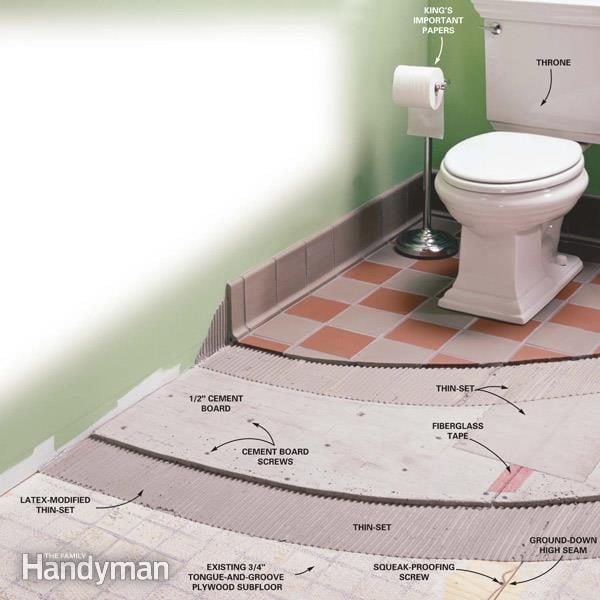Gypcrete Installation Process


Download Download Helper on this page. How to Install Gypcrete By Michelle Hickman. Installation of gypcrete is done by experienced professionals who level the material over the surface based on. POURED UNDERLAYMENT MIXING INSTRUCTIONS. This process until you have achieved a cylinder. Or expenses associated with the removal or installation of Gypcrete.
All About the Roof Installation Process Whether you’ve hired a professional or plan to install a roof yourself, understanding the roof installation process and steps involved will help you ensure your new roof is properly installed. Here’s an overview of the installation steps for two different types of roofs on your home. Removing the Old Roofing The old roofing will probably have to be removed before the new is put in place. Many people will install multiple layers of roofing over top one another to save time; but adding too many layers (i.e., asphalt shingles) can lead to premature failure in the roof. The old roof should be stopped down to the sheathing, and rebuilt. Evaluating the Roof After removing the old roof, evaluate the sheathing.
Roof sheathing is made up of flat panels that provide structural support and a base on which roofing materials, like shingles, are attached. Higurashi Kai Visual Novel Download English here. Look for any moist areas or trouble spots that will have to be replaced. Protecting Against Ice If you live in an area that’s prone to ice for even part of the year, install an ice and water barrier around your roof. This product goes on around the edges of the roof, but especially at the very bottom edge that is most prone to the buildup of ice. This sticky underlayment adheres to the roof sheathing, then nailed down for added strength and stability.
Putting on the Drip Edge The drip edge for the roofing goes down in two different parts of the installation. For the lower part of the roof it goes on before the underlayment, for the sides of the roof it goes on after. First, install the metal drip edge along the bottom edge of your home over top of the ice and water barrier.
Nail it into place flat against the roof. After you get the underlayment installed on your home you have to go over that with drip edge on the sides the same way that you did at the bottom. This prevents water from running over the edge of the siding and then back underneath it. Putting Down the Underlayment Underlayment, whether felt paper or synthetic, is saturated in water resistant materials and comes in two thicknesses, 15# and 30#. The 30# underlayment is twice as durable as the 15#, but the synthetic products are much more durable than either felt paper option. If you are looking for the most effective way to protect your roof besides for the roofing itself, invest in the more expensive synthetic underlayment, it’s the most convenient and durable option.
Roll the underlayment along the edge of the roof and secure it in place using cap nails every four inches along the outside edges and around eight inches in the center. These cap nails should not go through the drip edge, but instead just above it. Roll out one row of underlayment after another securing it all down with cap nails making sure to overlap the lower row by at least six inches with the next row. Overlap the underlayment sections up to the peak of the roof and then install a row straddling the peak so that the underlayment caps off both sides of the roof at the same time. Getting the Roofing on The technique that you use to install the roofing of your home depends on the type of roofing you choose. Shingle roofing, corrugated metal roofing, and clay tile roofing require different approaches. This article discuss the installation process for the two most common types of roofing: asphalt shingle roofing and panel metal roofing.
Installing Asphalt Shingles are known for being one of the simplest types of roofing materials to install. First, lay a run of starter shingles along the bottom of the roof and nail them firmly into place using roofing nails a couple inches up from the edge of the roof. Lay a row of starter shingles down both sides of the roof as well and secure those in place using roofing nails an inch or two away from the edge as well.
Lay out the first full shingle near the bottom corner of the roof and lock it into place using six nails all just below the tar line of the shingle. Lay the next shingle down and nail it the exact same way. Continue this process until you’ve gone across the roof from one side to the other. For each new row, stagger the roofing. Shingles have broken sections at the bottom and square sections.
Line the square section of your next row up with the broken section of the previous row so the break is right in the middle of the square. This gives water something to flow over so it isn’t leaking down behind your shingles. Lay out all the remaining shingles with the new staggered pattern, but use four nails per shingle this time. On the next row of the shingles go back to the original position so that your shingles are lined up with the edge of the roof once again. This maintains the stagger and makes the roof stronger overall. Repeat this process up to the cap of the roof on both sides until you are within five inches of the top. Download Crash Of Flight 401 Movie Online.